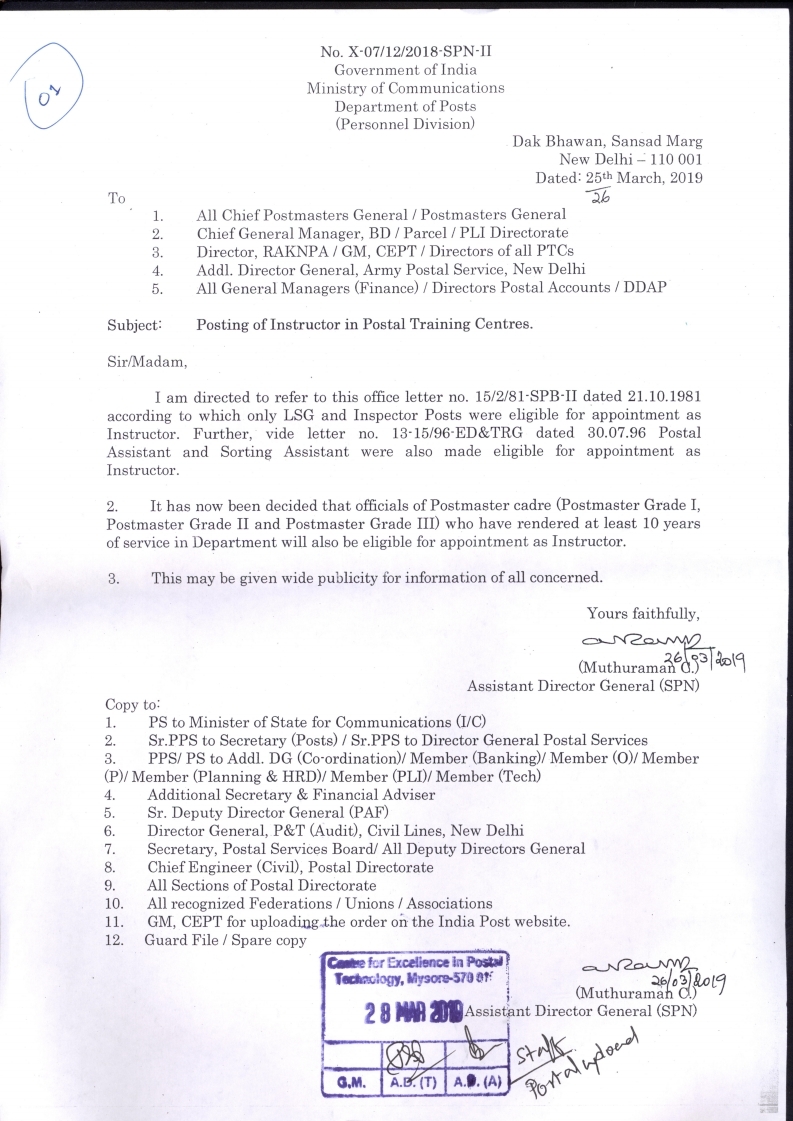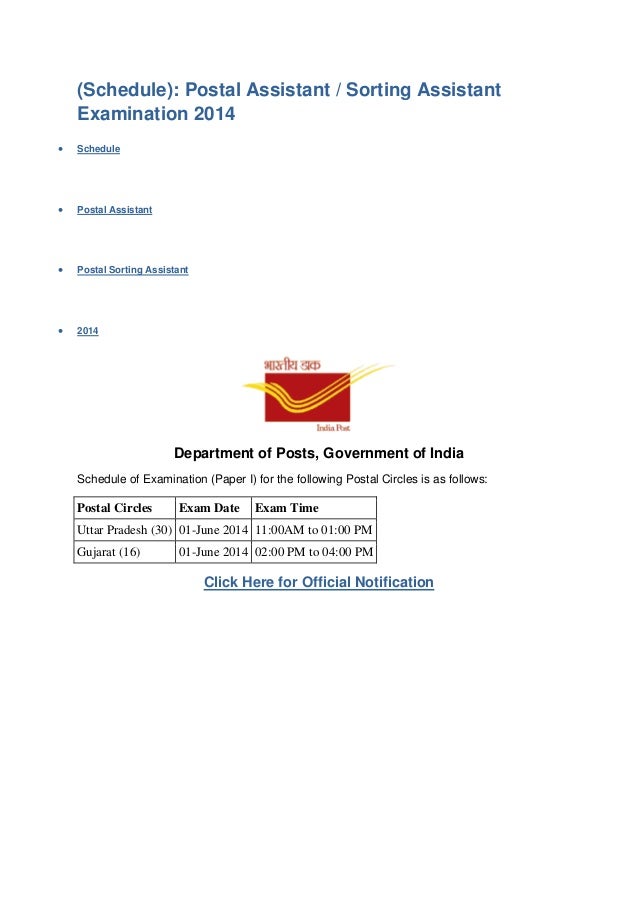- Training For Postal Assistant Jobs
- Postal Training Center
- Postal Service Training
- Training For Postal Assistant Duties And Responsibilities
While the training site does not provide job placement, it does pass on information from companies seeking virtual assistants. International Association of Virtual Office Assistants (IAVOA) offers a 10-week training program with Virtual Business Training. The program focuses on starting a virtual assistant business and includes mentoring. BPNL Recruitment 2020: Training Coordinator & Assistant Posts Vacancies -21 Dec 2020. Skip to the content. RCFL Recruitment 2021: Trade Apprentice. Newly hired postal service workers receive short-term on-the-job training, usually lasting less than 1 month. Those who have a mail route may initially work alongside an experienced carrier. Important Qualities. Customer-service skills. Postal service workers, particularly clerks, regularly interact with customers. Pharmacist Assistant Post Basic jobs now available. Pharmacist, Program Assistant, Learner Basic - Amajuba Mall and more on Indeed.com. SSC CHSL 2019-20 Postal Assistant (PA) Govt Job: SSC CHSL 2019-20 Online Registration will end on 10th Jan 2020 @ssc.nic.in. 12th pass candidates can apply for the post Postal Assistant (PA).

PAEA is partnering with the American Academy of Addiction Psychiatry and a coalition of national professional organizations in a grant funded by SAMHSA called the State Targeted Response Technical Assistance Consortium (STR-TA). PAEA as a partner organization will focus on assisting PA programs with incorporating medication-assisted treatment (MAT) waiver training into their curricula. PAEA’s vision is that all PA program graduates and faculty will be waiver eligible.

What is MAT?
MAT is the use of medications to treat persons with opiate use disorder. The three medications approved by the FDA for MAT are methadone, buprenorphine, and naltrexone.
Funding for this grant from the Substance Abuse and Mental Health Services Administration will help us assist programs with incorporating MAT training into PA programs’ curricula.
NIDA. (2016, November 1). Effective Treatments for Opioid Addiction. Retrieved on June 25, 2018
- PAs can apply for the DEA X-waiver to prescribe buprenorphine for MAT of opioid use disorder following completion of 24 hours of training by an approved organization.
- MAT waiver training is provided by these DATA 2000 approved sponsors:
- American Academy of Addiction Psychiatry (AAAP)
- American Society of Addiction Medicine (ASAM)
- American Osteopathic Academy of Addiction Medicine (AOAAM)
- American Psychiatric Association (APA)
- The American Academy of Physician Assistants approved MAT waiver training for 24 hours of category I CME credits.
MAT Initiative Information Session and Q&A
This webinar presents an overview of PAEA’s Medication-Assisted Treatment waiver training initiative and will go over MAT training resources.
Breaking Down Barriers to PA Student MAT Training
John Lopes, project director for PAEA’s MAT Waiver Training Initiative, leads this webinar to help programs overcome difficulties in implementing the training.
Frequently Asked Questions
Read through the FAQs for more information on training and implementing MAT training into PA programs.
Further reading
MAT Initiative Networker Articles
August 12, 2020:PAEA Joins KAPA for Kentucky MAT Training
April 29, 2020:AAPA Survey Underscores Importance of MAT Training
January 8, 2020:A Duke University PA Program Guide to Student MAT Training
August 21, 2019: Le Moyne PA Program Leads the Way in MAT Training and NPI Outcomes
June 19, 2019:Assessing a Year of Successes and Challenges: PAEA’s MAT Initiative
June 12, 2019:MAT Initiative Blazes Trail to Kansas City
May 7, 2019:McCance-Katz Speaks Out on OUD
April 3, 2019: PAEA MAT Initiative Team Spreads the Word Out West
December 12, 2018: Incorporating MAT Training into the Curriculum: Lessons Learned
December 12, 2018: NHSC Loan Repayment Program Benefits PAs with MAT Waiver
December 12, 2018: NPI Numbers: A Better Way to Measure Outcomes for PA Education
October 10, 2018: PAEA President Speaks at Opioid Crisis Symposium
June 13, 2018: PAEA Welcomes Director for New MAT Initiative
May 30, 2018: Video Introduces Valuable MAT Training Initiative
MAT Initiative Networker Alerts/Announcements
June 3, 2020:REACH Initiative Now Accepting Applications
April 8, 2020:MAT Training, PCSS Webinars Offer Curriculum for Students, CME for Faculty
August 14, 2019:AAAP CME Opportunities for PA Faculty
April 24, 2019:Important New Opioid REMS Training Module
May 20, 2019:Updated SCOPE of Pain Resources Available
February 6, 2019:Action Collaborative Takes Aim at Opioid Epidemic
November 28, 2018:Free SCOPE of Pain Webinar in December
October 17, 2018:SAMHSA Grants for MAT Training Awarded to Five PA Programs
September 26, 2018:Integrating Opioid Use Disorder Treatment into Health Workforce Training
September 13, 2018:Webinar: MAT Waiver Training Initiative
August 22, 2018:Symposium on Adolescent and Young Adult Addiction
Resources on Training
Click on each category header to view relevant links.
General Information
PCSS is a program funded by the Substance Abuse and Mental Health Services Administration (SAMHSA) created in response to the opioid overdose crisis. Access hundreds of free training programs addressing the care of patients with opioid use disorder and chronic pain. You can ask an expert for assistance with a problematic patient issue or request a mentor to help you improve your care of patients with OUD and chronic pain. View and share these short videos with your patients.
The Substance Abuse and Mental Health Services Administration (SAMHSA) MAT page contains links to MAT waiver training and information about the approved medications for opiate, alcohol, and tobacco use disorders. Additional information about legislation, regulation, and guidelines is also available here.
Download a copy of the American Society of Addiction Medicine (ASAM) National Practice Guideline for opiate use disorder and other useful information, including waiver training for PAs and NPs.
The Opioid Response Network (ORN) is a network of organizations, including PAEA, that is led by the American Academy of Addiction Psychiatrists. The network can provide technical assistance to states and territories with training and assistance from local experts across the country, focusing on evidence-based practices to meet locally identified needs.
Find information on this ASAM page on billing and coding for reimbursement for providing addiction treatment services. Download documents outlining standards and performance measures for addiction treatment.
MAT Waiver Training Websites
MAT waiver training is available in a variety of formats. You can complete all 24-hours of training online. The initial 8-hour training may be provided in a face-to-face format or a hybrid 4-hour in-person session with the last four hours completed online. Check the websites of the DATA 2000 sponsors of waiver training for a course near you. Once you’ve completed the 8-hour physician training block, you can complete the 16-hours of additional CARA required online.
Register and begin training at this ASAM PA waiver training page.* If you’ve taken the initial 8-hour training in person at an educational event, you can access the remaining 16-hours of training here.
MAT waiver training from PCSS.* The training is divided into two parts so that if you’ve taken the first 8 hours face-to-face, you can complete the remaining required 16 hours here.
American Psychiatric Association offers different training opportunities for medication-assisted treatment.
*approved for 24 hours of category 1 CME by AAPA
National Provider Identifier Number
Apply for a National Provider Identifier (NPI) number through the National Plan and Provider Enumeration System website. If you have a NPI, you can make changes to your information. If you don’t have an NPI, you’ll need to establish an Identity and Access account.
Or download a pdf of the National Provider Identifier application form.
Research & Data
This Boston University webpage links you to the latest clinically relevant research on alcohol, illicit drugs, and health.The National Institute on Drug Abuse is a gateway to numerous resources on substance use disorder diagnosis and treatment.
Compare data from geographic locations with the Medicare Part D opioid prescribing interactive mapping tool.
Related Resources
FREE NEJM Knowledge+ Pain Management and Opioids focus module. Sixty-two engaging, case-based questions, with feedback, allow you to earn your required CME credits.
SCOPE of Pain is an effort by Boston University to instruct providers on safe opiate prescribing practices, Safe and Competent Opioid Prescribing Education.
This panel discussion by the faculty at Baldwin Wallace University presents two patients in recovery from OUD and one person whose family member suffered from OUD.
Find videos and other content to help you teach the concepts and practice of Screening, Brief Intervention, and Referral to Treatment (SBIRT) to your students through the NORC at the University of Chicago SBIRT web page or visit the SAMHSA-HRSA Center for Integrated Health Solutions SBIRT web page for more resources.
The Association for Medical Education and Research in Substance Abuse (AMERSA) is a nonprofit professional organization whose mission is to improve health and well-being through interdisciplinary leadership in substance use education research, clinical care, and policy.
The Institute for Research, Education & Training in Addiction (IRETA) is a nonprofit geared toward improving individual and system-level responses to addiction. IRETA offers education, evaluation, and guidance to help people respond effectively to substance use and related problems.
CO*RE includes 10 member-led healthcare organizations (AAPA among them) representing PAs, nurse practitioners, medical doctors, and more. Its mission is to “promote individual and population health” and “interprofessional education related to the comprehensive management of pain, addiction, and their comorbidities.”
Building on a rich history, the ATTC Network continuously strives to improve the quality of addictions treatment and recovery services by facilitating alliances among front line counselors, treatment and recovery services agency administrators, faith-based organizations, policy makers, the health and mental health communities, consumers and other stakeholders. By connecting them to the latest research and information through activities such as skills training, academic education, online and distance education, conferences, workshops, and publications, the ATTC Network responds to the emerging needs of the field.
The National Alliance for Medication Assisted (NAMA) Recovery is an organization of health care professionals and patients who support medication-assisted and other quality opiate agonist treatment. Its main objective is to advocate for patients by empowering them and destigmatizing medication-assisted treatment.
National Alliance of Advocates for Buprenorphine Treatment is a non-profit organization whose mission it is to educate the public about opioid addiction and the buprenorphine as a treatment option,help reduce the stigma and discrimination surrounding patients, and serve as a conduit connecting patients in need of treatment to qualified treatment providers.
Program Resources
 Appendix M for Self Study Report.ARC-PA requires all program changes to be reported in Appendix M when a self-study document is submitted. Here is suggested documentation when you add MAT training to your program.
Appendix M for Self Study Report.ARC-PA requires all program changes to be reported in Appendix M when a self-study document is submitted. Here is suggested documentation when you add MAT training to your program.PA Waiver Training Modules.Every student wants to know why they are doing something as part of their course of study. Listed are the ARC-PA standards that might be impacted by the addition of MAT training to your program. Also listed are the topics and objectives of the MAT waiver training from ASAM and PCSS to help you comply with the standards.
Download these two standardized patient scripts that programs could adapt and use for their curricula: PTSD and Chronic Pain, and Chronic Back Pain and Opioid Resistance.
Get in Touch
Contact John Lopes, MAT Initiative Project director at MATInitiative@paeaonline.org or 703-667-4322.
Learn how GI Bill training programs can help you pay for books, supplies, and housing while you’re learning a trade or skill through on-the-job training or apprenticeships. Find out how to get these education benefits.
Am I eligible for education benefits?
You may be eligible for benefits if you qualify for the GI Bill and want to work in an industry or job that has on-the-job training, like:
- Plumbing
- Hotel management
- Firefighting
Who’s covered?
- Veterans
- Spouses and children getting benefits through either the Fry Scholarship or the Survivors’ and Dependents’ Educational Assistance (DEA) Program
- Children getting transferred benefits under the Post-9/11 GI Bill (also called Chapter 33)
Exception: You can’t get on-the-job training if you’re an active-duty service member or a spouse using a transferred benefit.
What benefits can I get?
Training For Postal Assistant Jobs
- Money for books and supplies, up to $83 per month
- Money for housing, if you’re covered under the Post-9/11 GI Bill
How do I get these benefits?
You’ll need to make sure the program is approved for VA education benefits. Use the GI Bill Comparison Tool to find out if the program is approved.
You’ll most likely need to enter into a training contract for a set amount of time with an employer or union. During training, you’ll probably get a salary from the employer or union, which can go up as you gain more skills. When you finish your training, you’ll get a job certification or journeyman status.
If you’re a Veteran in an approved program, you can use your GI Bill benefit and get tax-free money for books and supplies. The Post-9/11 GI Bill offers you a monthly housing allowance (MHA) in addition to your entry-level wage. We issue GI Bill payments each month after your employer or union reports your hours to us.
Your payment depends on which GI Bill program you’re using.
View the payment rates
Postal Training Center
Post-9/11 GI Bill MHA payment rates
Postal Service Training
You’ll get 100% of your applicable MHA during the first 6 months of training. Then you’ll get this percentage of your MHA until your benefits run out:
- 80% of your applicable MHA during the second 6 months of training
- 60% of your applicable MHA during the third 6 months of training
- 40% of your applicable MHA during the fourth 6 months of training
- 20% of your applicable MHA during the rest of the training period
Note: If you completed at least 90 days, but less than 3 years, of active-duty service after September 10, 2001, your applicable MHA benefit will be lower than the full amount shown in the rate tables. Depending on how long you served, you’ll start with an amount that’s between 40% to 90% of the full benefit.
All other GI Bill Programs payment rates
You’ll get this percentage of your GI Bill rate until your benefits run out:
Training For Postal Assistant Duties And Responsibilities
- 75% of the full-time GI Bill rate for the first 6 months of training
- 55% of the full-time GI Bill rate for the second 6 months of training
- 35% of the full-time GI Bill rate for the rest of the training period
